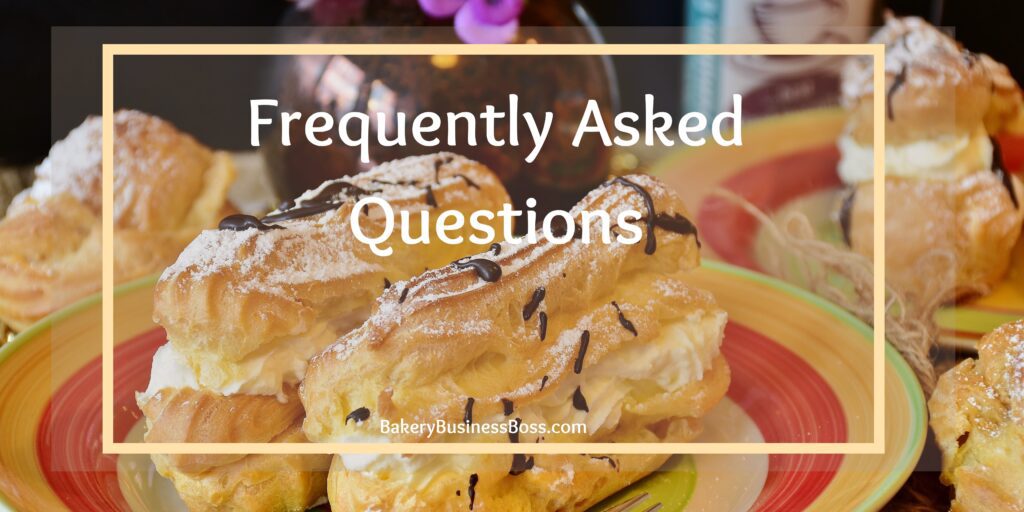A bakery shop’s interior design is critical for attracting consumers and delivering a memorable experience. A well-planned design may make a bakery shop feel welcoming, warm, and visually appealing.
To best achieve a warm, inviting ambiance in your bakery, you should prioritize lighting, layout optimization, appealing displays, comfortable seating, and selecting a cohesive color scheme and decor that align with your bakery’s brand.
In this article, we’ll look at the essential features of bakery store interior design and offer tips on how to create a wonderful place that reflects the bakery’s brand, improves the customer experience, and ultimately leads to the company’s productivity.
Understanding the Importance of Bakery Shop Interior Design
A bakery shop’s design provides more than just aesthetics; it also aims to showcase the delectable goods on offer while establishing a fascinating atmosphere. A well-designed interior is essential to creating a welcoming atmosphere that encourages visitors to enter, explore, and remain. To create a pleasing combination that engages the senses, every component—from the lighting design to the layout optimization—must be carefully taken into account.
Lighting creates an atmosphere and showcases the delicious delights, blending natural and artificial sources to produce a warm glow. A smooth client flow is guaranteed by layout optimization, which also maximizes space use and reduces any congestion.
The overall atmosphere is influenced by thoughtful decor decisions, which include the use of materials, color schemes, and textures. These decisions also represent the bakery’s own brand identity. The interior design is strengthened even more by a consistent branding strategy that communicates the bakery’s principles and history.
Bakery operators may design an environment that not only attracts customers but also encourages a memorable experience that keeps them coming back for more by giving priority to these factors.
Lighting: Illuminating the Path to Accomplishment

Interior design for bakeries must consider lighting since it can change the mood and draw attention to the attraction of baked goods. An attractive and warm atmosphere is created by using the right lighting, which encourages customers to enter. It not only provides lighting but also acts as a spotlight, highlighting the mouthwatering foods on exhibit.
To get the intended appearance, a clever mix of artificial and natural lighting sources is essential. Natural light gives the environment a revitalizing, organic vibe that makes it feel alive. To optimize the amount of daylight during the day, big windows or skylights might be added. On the other hand, artificial lighting offers constant illumination throughout the day and aids in establishing a warm atmosphere in the evening.
It is crucial to think about the placement and intensity of light fixtures to create a well-lit environment. Customers might be drawn in by making the baked goods stand out aesthetically by highlighting them with targeted spotlights or track lighting. Furthermore, ambient lighting needs to be dispersed equally around the bakery shop to provide a relaxing and welcoming environment for visitors to enjoy their visit.
Bakeries can design a space that not only presents their baked goods in the best light but also fosters a warm and welcoming atmosphere that beckons customers to indulge in the treats on display by carefully considering the lighting components and striking a balance between natural and artificial sources.
Layout Optimization: The Flow of a Delicious Journey
An efficient layout is a key component of bakery business interior design because it immediately affects the experience of the consumer. In addition to ensuring a smooth flow, a well-designed floor plan also maximizes the room’s general usability. To guarantee an effective layout, several important variables must be taken into account.
The movement of customers is of utmost significance. Customers may simply navigate through the bakery business by placing entrance and exit points in strategic locations and providing obvious routes. This reduces traffic and creates a pleasant, effective experience. Additionally, the design should make it simple to travel between various spaces, including the ordering, browsing, and seating areas.
The effective utilization of available space is yet another essential factor. Maximizing the use of the available space guarantees that the bakery can serve a sufficient number of clients while keeping a comfortable setting. Every square foot counts. Baking stations, display racks, and seating places are strategically placed to facilitate smooth operations and provide consumers enough room to browse and enjoy their delicacies.
To highlight the bakery’s offerings and draw customers, the display areas must have clear sightlines. Customers are invited to enjoy their senses and make educated decisions via displays that are strategically placed with clear perspectives. Avoiding excessive clutter, strategically positioning displays at eye level, and displaying the delights in glass cases or open shelving will help you achieve this.
The functionality and comfort of both consumers and employees should be considered when designing the plan. Baking stations ought to be set up to facilitate an efficient workflow and simple access to supplies and equipment. Customers may unwind and enjoy their baked goods in a welcoming environment thanks to cozy seating areas that are well-spaced and set up to promote both seclusion and social engagement.
Bakery owners may create a layout that maximizes the overall experience for both customers and staff by carefully taking into account issues like customer traffic flow, effective space usage, clear sightlines, and functionality. A thoughtfully planned floor plan makes it easy and fun for visitors to navigate the bakery, luring them in to explore, indulge, and come back for more delightful encounters.
Display: Tempting Visual Treats

As a doorway to the delicious world of baked products and a method to draw visitors in, an inviting display is a potent weapon in bakery store interior design. An attractive display draws attention from customers, highlights the bakery’s goods, and eventually increases sales. When designing a tempting bakery display, several important factors must be taken into account.
To highlight the variety of baked items while keeping a structured and aesthetically pleasing appearance, strategic organization is essential. To present the delicacies appealingly, use counters, display shelves, and refrigerator cases.
The display becomes aesthetically beautiful and invites customers to browse the offers by carefully arranging the products, grouping them by type or theme, and making sure there is adequate space between objects.
The inclusion of appealing signs, attention-grabbing accessories, and mouthwatering colors, in addition to the arrangement, can further improve the whole show. A bakery’s individuality can be expressed while also conveying important information, including descriptions of flavors or current deals, through well-designed signage.
A sense of wealth can be created by using eye-catching decorations like cake stands, baskets, or themed accessories. Using mouthwatering hues that complement the bakery’s logo and arouse appetites can also help draw attention and increase client desire.
To ensure an engaging presentation, the bakery display should also be periodically replenished and maintained. Any broken or expired goods should be taken away, and freshly baked items should be promptly refilled. A regular evaluation of the display from the viewpoint of the client can aid find areas for development and guarantee that the presentation continues to be aesthetically alluring and inviting.
Bakery operators may create an appetizing visual feast that tempts guests to indulge in the bakery’s scrumptious delights by strategically organizing the display, including beautiful signs and props, and maintaining a fresh and visually pleasing presentation. In addition to piquing customers’ curiosity, a well-designed display enhances the atmosphere and experience of the bakery shop.
Creating Cozy Seating Areas: Encouraging Customers to Stay
A bakery shop is a haven where consumers may retreat, unwind, and relish the treats before them rather than just a transactional location for buying baked products. A crucial component of interior design that enhances the overall customer experience in the bakery business is the creation of comfortable seating areas.
To encourage visitors to linger and savor their treats, comfortable furniture is essential. People are invited to relax, rest, and savor the bakery’s treats in plush recliners, cushioned benches, or comfortable sofas. The furniture should complement the bakery’s general design and should promote comfort and relaxation.
A warm and welcoming atmosphere is primarily created by inviting décor components. Customers may stay longer in a warm setting that has soft lighting, natural textures, and calming hues. Considerable touches like beautiful pillows, soft blankets, or background music can heighten the feeling of coziness and relaxation.
The placement of the chairs should balance individual privacy with group interaction. While some customers might choose to indulge in their sweets alone, others might prefer to do so with friends or family. To accommodate varied tastes and promote a feeling of community within the bakery, a variety of sitting options, including individual tables, small group settings, and communal spaces, should be made available.
Bakeries may become pleasant spaces where customers can unwind, connect, and enjoy their baked goods by designing seating areas with cozy furniture, warm decor, and a balanced arrangement that caters to both seclusion and social interaction. Customers are drawn back to the bakery because of the comfort and sense of belonging there, making it more than just a location to buy sweets and a beloved gathering place.
Here’s your bakery shop building essentials. Check out our article.
Embracing Rustic and Modern Decor: Striking the Perfect Balance

A bakery shop’s interior design must consider the decor since it establishes the mood, conveys the brand identity, and fosters a distinctive environment that appeals to customers. Warmth, authenticity, and modern flare can be achieved through the deliberate blending of rustic and modern features.
A popular approach to give the bread shop character and authenticity is to incorporate natural materials. Wood accents, whether in the form of furniture, shelving, or flooring, add a cozy element and a sense of the outdoors. The rustic vibe can be further enhanced with exposed brick walls or stone features that give texture and visual interest.
Sleek and contemporary finishes can add a feeling of elegance and freshness to balance the rustic aspects. A contemporary feel can be added to the entire decor with clean lines, polished surfaces, and simple designs. By fusing nostalgia with a modern edge, this fusion of rustic and modern features provides a fascinating contrast that appeals to a wide spectrum of clients.
The atmosphere is improved by a consistent color palette that complements the bakery’s brand identity. Warm browns, creamy whites, and gentle grays are examples of earthy tones that can complement natural materials. Pops of bright color or metallic accents can give visual interest and a contemporary feel.
Bakery owners may design a space that accurately represents their business identity and fosters a distinctive environment by carefully choosing and blending rustic and modern components, utilizing natural materials, and implementing a consistent color palette.
Their bakery business is a welcoming and memorable destination because of this creative blend, which welcomes customers into a setting that is both refreshingly modern and delightfully retro.
Branding: Telling a Delicious Story
The interior design of a bakery business must have consistent branding, which is essential for communicating the bakery’s identity and narrative. Customers should have a seamless, memorable experience by engaging with a brand’s identity and values through every design decision, color choice, and aesthetic detail.
The bakery’s interior design should capture the spirit of the company. Elements like elaborate lettering, vintage fixtures, and traditional patterns can bring back memories and heritage for a traditional bakery with a vintage appeal. On the other hand, a modern artisanal patisserie can choose streamlined and modern design components, clean lines, and simple decor that exudes a feeling of creativity and craftsmanship.
The interior design’s color scheme should complement the bakery’s corporate identity. Colors can arouse feelings and support the bakery’s posture and beliefs. While bold and vibrant colors can elicit feelings of excitement and energy, warm and earthy tones can create a cozy and welcoming ambiance. Customers may recognize and interact with the brand more easily because of the bakery shop’s consistent use of color.
The general aesthetic of the interior design should convey the history and caliber of the bakery’s goods. The interior design should convey the bakery’s commitment to excellence and its dedication to offering delectable delicacies, whether it is through well-chosen displays, premium materials, or meticulous attention to detail in the design components.
Bakery owners may create a unified and immersive experience that is consistent with their brand’s beliefs, history, and the caliber of their products by maintaining consistent branding in the interior design. This constant portrayal not only draws in and engages guests, but also strengthens the bakery’s distinctive brand, making an impression that sticks and encouraging customer loyalty.
Frequently Asked Questions

How does the atmosphere of a bakery shop affect how customers feel?
The interior layout of bakeries greatly influences how customers are treated. A well-designed interior fosters a warm and friendly ambiance that encourages consumers to explore the bakery’s offerings and makes them feel at home.
The use of appropriate lighting, eye-catching displays, inviting seating places, and a clever layout can improve the atmosphere overall and make a visit memorable. A well-branded and aesthetically beautiful interior design helps clients form a lasting image of the bakery by communicating its identity and story.
What are some important factors to take into account while designing the inside of a bakery shop?
Interior design for a bakery shop must consider lighting since it creates an atmosphere and draws attention to the baked items. Among the most important lighting factors are:
Natural and artificial lighting
To achieve a balanced illumination, use both natural light sources, such as windows or skylights, and artificial lighting fixtures.
Accent lighting
Use track lighting or spotlights to draw attention to certain display areas or important products.
Ambient lighting
Install general overhead lighting to create an even and comfortable level of illumination throughout the area.
Warm tones
To create a warm and welcoming ambiance, choose warm-colored lightings, such as gentle whites or yellows.
Dimmers
You might use dimmers to change the lighting levels according to the time of day or the atmosphere you want to create.
How can I design a plan for a bakery shop that works?
Considerations for designing an efficient bakery store layout include client flow, space use, and employee efficiency. Here are a few pieces of advice:
Entry and circulation
Make sure the entrance is welcoming and clear, guiding consumers into the store naturally. Create a layout that promotes efficient traffic flow while avoiding bottlenecks and congestion.
Display areas
Arrange shelves and cases for displays in such a way as to display the bakery’s goods. Organize and visually appealingly arrange the pieces.
Service areas
Position the service counter and point of sale in a practical area that enables workers to engage clients effectively.
Seating configuration
If seating is provided, it should be set up in a way that promotes both seclusion and social interaction. Think about whether there are any power outlets available and whether the sitting is comfortable.
Back-of-the-house factors
Create a workspace that is practical and effective for the staff, complete with baking stations, storage spaces, and a clean kitchen.
To achieve optimum effectiveness and customer happiness, keep in mind to periodically analyze and modify the layout depending on consumer feedback and changing business demands.
To learn more on how to start your own bakery business check out my startup documents here
Please note that the contents of this blog are for informational and entertainment purposes only and should not be construed as legal advice. Any action taken based on the information provided in this blog is solely at your own risk. Additionally, all images used in this blog are generated under the CC0 license of Creative Commons, which means they are free to use for any purpose without attribution.

About the author. Entrepreneur and Bakery Business Fan.
Hi! I am Shawn and I am a happy individual who happens to be an entrepreneur. I have owned several types of businesses in my life from a coffee shop to an import and export business to an online review business plus a few more and now I create online bakery business resources for those interested in starting new ventures. It’s demanding work but I love it. I do it for those passionate about their business and their goals. That’s why when I meet a bakery business owner, I see myself. I know how hard the struggle is to retain customers, find good employees and keep the business growing all while trying to stay competitive.
That’s why I created Bakery Business Boss: I want to help bakery business owners like you build a thriving business that brings you endless joy and supports your ideal lifestyle.

